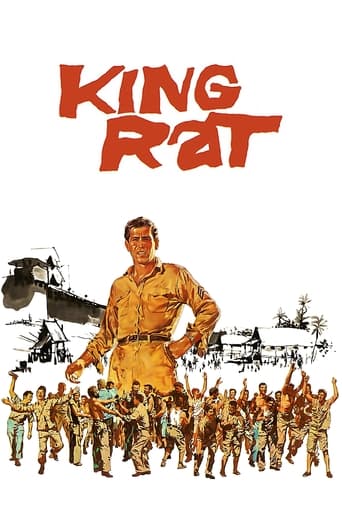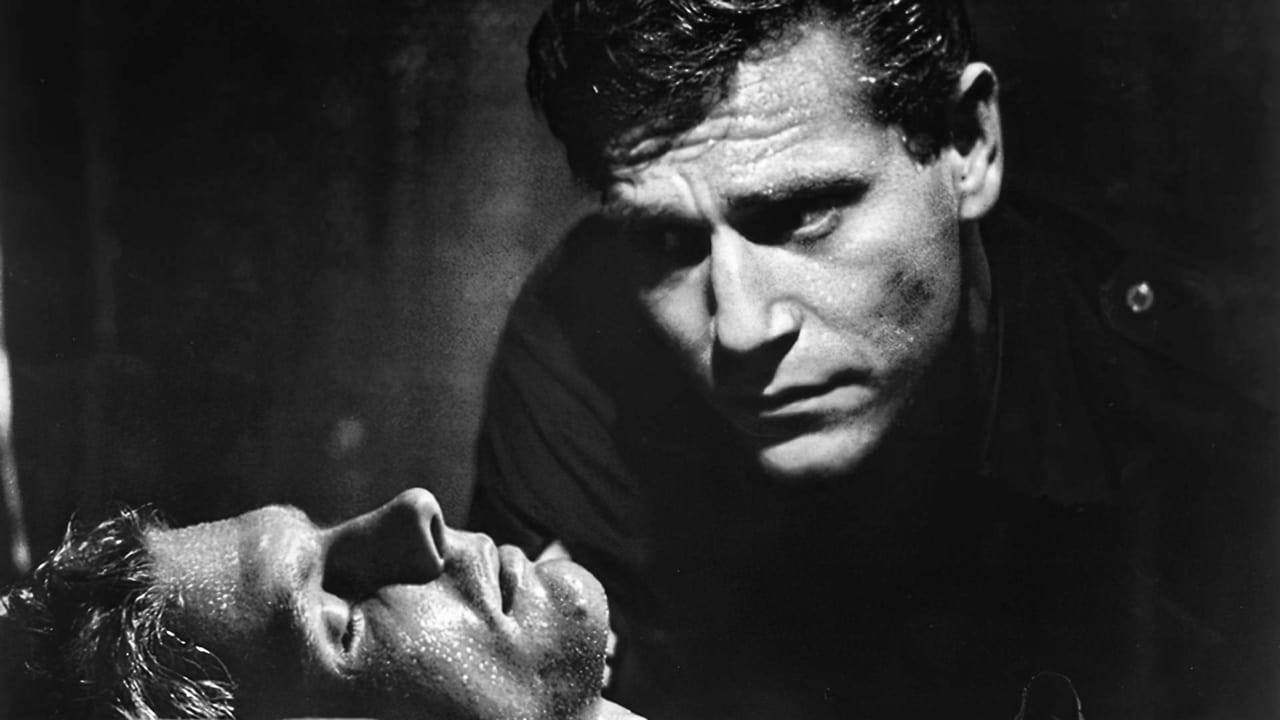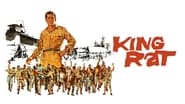gordonl56
KING RAT 1965 This 1965 production from Bryan Forbes is quite frankly, one of the best P.O.W. camp films ever made. It stars, George Segal, James Fox, Tom Courtenay, Patrick O'Neal and John Mills.The film is set in Singapore's infamous Changi Prison camp during the waning months of World War Two. The Prison housed thousands of captured Commonwealth troops as well as a smattering of Americans. The prisoners are all slowly dying as they try to survive in the squalid conditions present inside the camp. That is all but Corporal King, (George Segal) who runs a thriving black market operation trading with the Japanese guards. This keeps Segal feed, and in the small luxuries most in the camp never see, eggs, cigarettes etc.The camp Provost Marshall, Tom Courtenay spends his days trying to catch Segal at his "against the rules" business. Courtenay is stymied at every turn by most everyone in the camp. This is because damn near everyone is on Segal's payroll. What few possessions the prisoners have, watches, rings and the like are all brought to Segal to move. Smart operator, Segal, takes a piece of the action off both ends during these "trades".Hustler Segal befriends British officer, James Fox because he needs a translator who can speak Malay. This would make his exchanges with the guards easier. Fox soon becomes a top man in Segal's outfit, which is mainly made up of American prisoners.Fox hurts his arm helping Segal make a big money exchange one night. The two barely get away with the deal because Provost Courtenay appears on the scene. Fox's injured arm soon becomes gangrenous and Fox looks like he might die. Segal makes a big trade to get the needed antibiotics to save Fox's arm. He does this because Fox is the only one who knows where the loot from the earlier deal is hidden. Fox recovers and believes Segal saved him because he is really his friend. This is not the case.Worked into the story, is an interesting bit where Provost Courtenay, uncovers a scam by several of the officers in charge of food supplies, who have been stealing. Courtney reports the men to his commanding officer, John Mills. Mills tells Courtenay to drop the matter. Courtenay is shocked to discover that Mills is also in on the theft of food.Segal's group soon comes up with an idea to raise rats under the hut. They will then sell the meat to the camp officers. They will tell the buyers it is really meat from the Malay Mouse Deer.This business is just up and running, when the Japanese Camp commandant informs the Chief British officers that the war is over. The Allied forces soon arrive with plenty of food, medicine and clothing. Segal soon finds he is no longer needed, and falls from his position as the un-official "King" of the camp.The film is based on the bestselling novel, KING RAT, by James Clavell. Clavell had himself been a prisoner in Changi POW camp. One of Clavell's most famous novels, SHOGUN, was made into a big time television mini-series in 1980. Clavell wrote the story or screenplays for, THE GREAT ESCAPE, THE Satan BUG, TO SIR WITH LOVE, 633 SQUADRON, THE FLY and the LAST VALLEY. Clavell also directed and produced with TO SIR WITH LOVE as his best film in that area.The film's director, Bryan Forbes, was also a triple threat as a writer, producer and director. Forbes directed this film as well as doing the screenplay from Clavell's novel. Some of Forbes other film work, would include, WHISTLE DOWN THE WIND, THE WRONG BOX and THE STEPFORD WIVES.Handling the director of photography duties is five time Oscar nominated, and two time winner, cinematographer Burnett Guffey. His two Oscar wins were for, BONNIE AND CLYDE and FROM HERE TO ETERNITY. Guffey was well known to film noir fans for his work on, THE SNIPER, MY NAME IS JULIA ROSS, NIGHT EDITOR, FRAMED, KNOCK ON ANY DOOR, CONVICTED, SCANDAL SHEET, PRIVATE HELL 36, NIGHTFALL, THE TIGHT SPOT, HUMAN DESIRE and THE HARDER THEY FALL.
Naught Moses
Lawrence Kohlberg wrote a controversial and much discussed paper about the stages of moral development at the U. of Chicago in 1958. Kohlberg asserted that moral development ranged from conditioned obedience and fear of punishment through self-interest, conformity, authority for the sake of maintenance of social order, and consciously made social contracts, to awareness of universal ethical principles. While still subject to argument, a number of psychometric tests have been adapted or specifically developed to test the accuracy of Kohlberg's notions. To this day, his ideas strongly influence measures of anti-social, sociopathic and sadomasochistic thought and behavior in criminal justice and other endeavors. Take a look at it on, say, Wikipedia, and then watch "King Rat" closely to see where the various major characters fall on the scale. Further, one can utilize "KR" as an illustration of socialized, acculturated, "normalized," and belief-bound -- vs. chillingly empirical, anti-socialized, anti-ac-CULT-urated, ab-normalized, observation-driven -- appraisal of events. The former may well be "just" and "fair," but relatively ineffective when it comes down to survival... and the latter may be "ruthless" and "vicious," but relatively effective therefor. "KR" demands one climb out of the box of "delivered truth" based on authoritarian in-struct-ion to "get it." In modern neuropsychological parlance (see, for example, Iain McGilchrist), it requires that one pretty much abandon the rules and regulations of the brain's verbal- symbolic-skewed left hemisphere for the open-mindedness of spatial- sensory-skewed right. Even though the 1950s had been a watershed decade for existentialism and the 1960s a decade of wider distribution therefor, "King Rat" was =far= ahead of its time in the English-speaking world. But if one could have seen it in the Russian-speaking one (not possible during the Cold War, after all), anyone who'd read Dostoyevsky and Chekov -- let alone lived in a gulag -- would have sussed it immediately. RG, Psy.D., "The 12 StEPs of Experiential Processing," online.
maibbor
Enjoyed this film and the feel of it although it does weave the typical British touch of ugly American into it. "Bloody Yank capitalist, I dare say!"Fox, Mills and the rest do a great job playing themselves really, but Segal does a great job playing a character that could/would be despised. The American collaborating with the enemy and using the poor British soldiers to his own end.(laughs)However, this is a good film and the characters, most of them, are well developed, so we're with them too.Overall, I enjoyed it.
fokker55
I saw this movie when I was 10 years old or so when it was first released in '65 or '66. I remember George Segal's clean, well-fed and dressed performance in a role that, as an mid-boomer American, I resented in the looong (134 min.) black and white movie. Except for vague memories re the eggs, watch and of course, the rat victuals, all else blur with the passage of time. As I usually avoid TV's pan/scan, edited for content and time version of movies, I haven't seen it since. I read Cleavall's novel probably 20+ years later as a battered ppbk. Now, twenty years still later, the two have merged in my noodle-based, imperfect, personal RAM/ROM storage system. So I have it coming from Netflix this week and look forward to seeing which memories were from which source.In the meantime, here's a poser for you fans of the written word: I seem to recall early in the novel, a character remarked while swatting at an omnipresent fly using a plant fiber or hair swishing swatter, that he didn't try to kill the fly, he wanted to injure it could share the suffering of the prisoners did while the ants devoured it.Also in the novel, someone advised that to avoid dysentery, when defecating, use your left hand to wipe because you used your right hand to eat with.But then again, there may have been an Arabic source for this little truism.



 AD
AD





